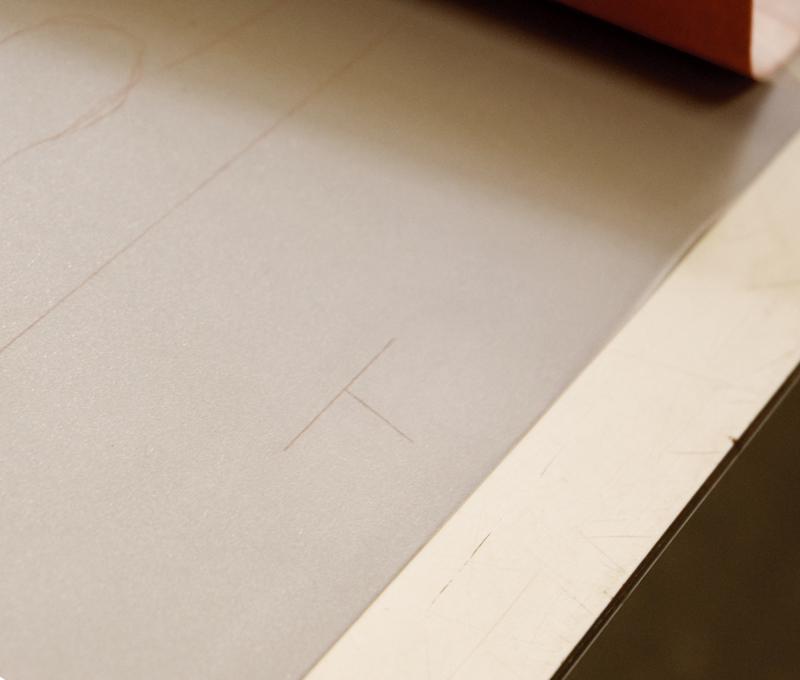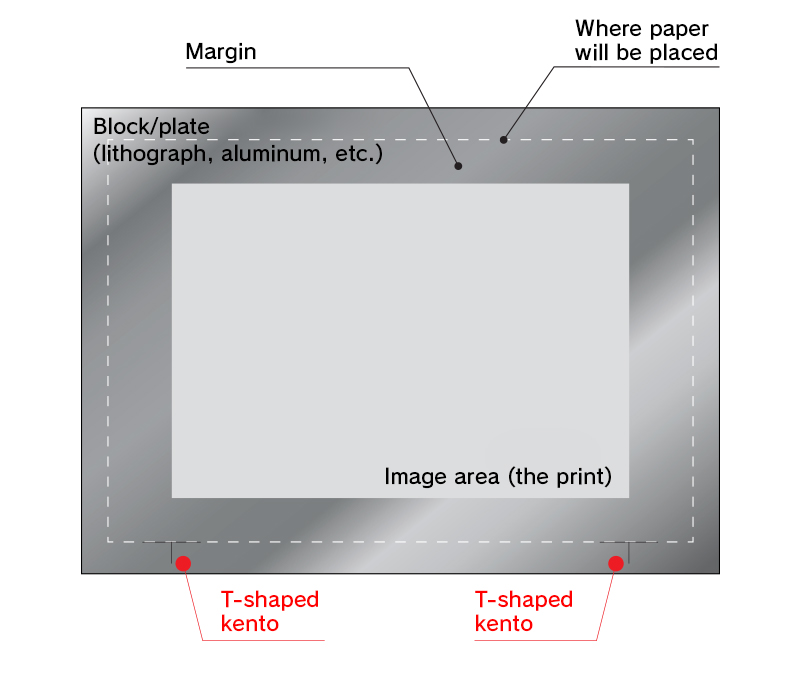T-shaped Kento
T字見当
T-shaped Kento
CATEGORIES
T-shaped kento is one form of registration mark that is made when producing block prints so that the position of the paper vis-à-vis the blocks is always uniform. They are used primarily with lithographs.
Such targets are essential when producing a print that requires two or more blocks for a single page, so that the two colors are not misaligned on the print. They may also be used on a single-block print to insure proper margins. The style of the mark used depends on the printing process.
In the case of lithographs, the process for which T-shaped kento are most commonly used, the first step is to place a sheet of paper on the block. In order to minimize errors, the long side is set as the base so that the distance between the two marks to be made will be maximized. Next a straight line is carved with a needle into the block at the point where the base line comes in contact with a line extending from the short edge of the image surface. Then a straight, vertical pencil mark is made on the paper at a point directly extending from the previous mark. Next a needle is used to carve a mark along the base of the paper with the point of contact at its center. This will result in a mark on the block in the shape of the letter “T,” which explains the name T-shaped kento.
When a sheet of paper is placed on the block, the base of the paper is aligned with the cross-bar of the T, which should then form a “+” sign with the pencil marks made on the sheet earlier.
Other types of registration mark used with lithographs include kagi kento, which is carved on the block in the shape of the letter “L,” and hari kento, which uses needles to line up the paper with plus signs (tonbo) carved on the block.


